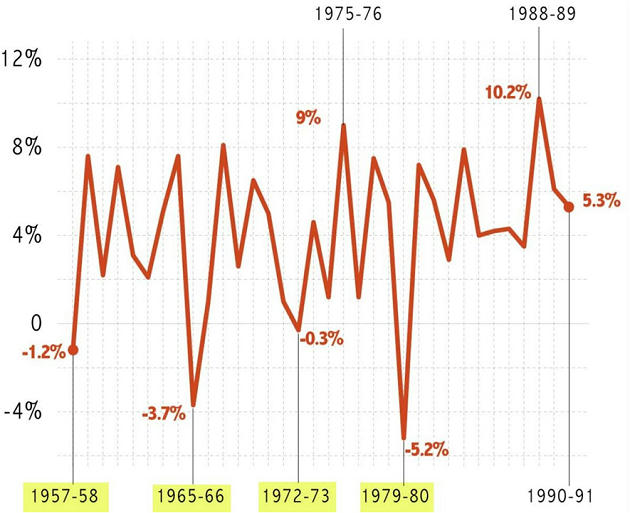Table of Contents

RECESSION
- Recession refers to phase of the downturn in the economic cycle a when there is a fall in the country’s GDP for some
- It begins after the economy reaches a peak of activity and ends as the economy reaches its trough.
- A common rule of thumb for recessions is two quarters of negative GDP growth.
- ‘A recession is a period of decline in total output, income, employment and trade, usually lasting six months to a year.’
WHEN HAS INDIA SEEN A RECESSION?
- From 1957 up to the pre-liberalisation period, India witnessed four years of an actual fall in output or negative growth in GDP.
- These were in the years 1957-58, 1965-66, 1972-73 and in 1979-80
- When the economy grew at -1.2%, -3.7%, -0.3% and -5.2%, respectively.
REASON
- These were mainly on account of either- Oil price shocks characterised by high oil prices or
- Drought that led to a sharp fall in agricultural production or both.
 For emerging economies like India,
For emerging economies like India,- Economists say that recession can be categorised as a period of a downturn in the business cycle much below the previous trends and
- Doesn’t necessarily need to be accompanied by negative growth rates.
- Hence, economists contend that India has seen periods of recession in the post- liberalisation period without actually seeing negative GDP growth rates.
- The first recession was from 1999-Q4 to 2003-Q1;
- The second recession was from 2007-Q2 to 2009-Q3; The third recession ran from 2011-Q2 till 2012-Q4
- The first bout of recession between 1999-2003 was in the aftermath of the Asian financial crisis that prompted the central bank to increase the repo rates to protect the This had an adverse impact on growth.
- The second recession was around the time of the global financial crisis of 2008.
- The third recession between 2011 and 2012 was in the aftermath of the rapid rise in the country’s fiscal and current account deficit and a period of high inflation.


Latest Burning Issues | Free PDF






















 WhatsApp
WhatsApp